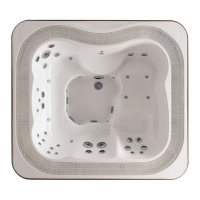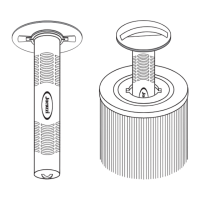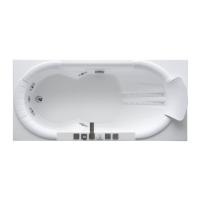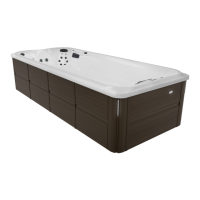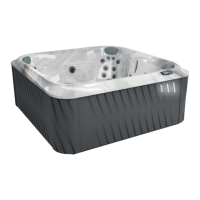Maintenance
Water Quality Definitions
pH: A chemical term used in expressing relative acidity or alkalinity in numerical values with
7.0 usually regarded as neutral, and for purposes of this manual, indicating pure water. From
7 to 0 indicates increasing acidity, and 7 to 14 indicates alkalinity.
PPM: Parts per million
Ozone: Triatomic oxygen (O ), a gas found commonly in nature, which, when dissolved in hot
tub water helps destroy impurities and contaminents.
Free Chlorine: Chlorine that has not combined with other chemicals and that is avalable to
destroy bacteria in the hot tub water.
Trichlor: A form of chlorine used in pool water treatment; usually supplied in tablet form. Not
recommended because of its higher acidic nature and slow dissolving action. Prolonged contact
with the hot tub shell may bleach or permanently mark the shell.
Sodium Dichlor: The type of chlorine that is recommended for hot tub use, as it is available
in fast dissolving granular form. It is neither excessively acidic nor alkaline in character and
does not readily dissipate in higher water temperatures.
Calcium Hypochlorite: A granular chlorine product that is inexpensive and effective but not
recommended because it often tends to form calcium deposits on heater parts and plumbing
fittings and leaves an unattractive film on the hot tub at the water line.
Sodium Hypochlorite: A liquid chlorine product that is inexpensive and effective but not
recommended because the liquid is readily spilled onto the hot tub or a surrounding area,
causing permanent damage.
Total Alkalinity: The measure of alkaline materials (such as carbonates, bicarbonates and
hydroxides) in the water. High alkalinity inhibits the effectiveness of chemicals to change the
pH. If the alkalinity of your hot tub water is high (above 150 ppm), it is advisable to drain the
water from your hot tub, refill and begin the balancing process over again. Low alkalinity
(below 60 ppm) could be corrosive and damage your hot tub system.
Superchlorination: (Also referred to as shock treatment.) the addition of an above-normal
level of disinfectant to kill any bacteria or algae that might have become resistant to normal
levels of disinfectant.
3
Page 32
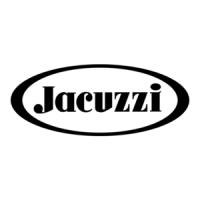
